Very fast f/1.4 or f/1.8 apertures are pretty rare on zoom lenses generally, and non-existent on FE mount zooms; and while f/2.8 FE mount lenses are also rare, Sony has recently developed FE 24-70mm f/2.8 and FE 70-200mm f/2.8 options in their G range of high-end optics. Such lenses will be extremely popular, especially for wedding and event pros demanding fast apertures and high-quality results, but they will come at a cost in terms of price, size, and weight.
More common in the FE zoom range, however, are “slower” f/4 or variable-aperture zoom lenses that have the advantage of less weight and bulk, as well as generally cheaper price points. DxOMark scores for such lenses are lower (as you’d expect), such as 26 points for the Sony FE 24-240mm f/3.5-6.3 OSS super zoom, which is the trade-off for versatility.
We’ve tested a total of six zoom lenses on the A7R II and have grouped them into the top three standard and top three telephoto zooms for a more in-depth analysis.
Best standard zoom: Sony FE 24-70mm f/2.8 GM
On full-frame sensors, the standard zoom focal range of 24-70mm is a versatile range for photographers who need wide-angle to short telephoto options in a single lens. Sony currently offers three such lenses with a variety of specifications, including fixed and variable apertures, and at different price points to suit all budgets.
If you need that “fast” fixed f/2.8 aperture, the Sony FE 24-70mm f/2.8 GM is the only option available, but encouragingly, it is the best-performing standard zoom we’ve tested on the A7R II. Costing a massive $2198, it’s also the most expensive, however, and at 136mm in length and weighing 886g, it’s a big and heavy lens for use on a mirrorless camera. If you can live with a fixed f/4 aperture, the Carl Zeiss Vario-Tessar T* FE 24-70mm f/4 costs a more palatable $1,198 and is shorter at 94.5mm and lighter at 426g.
Aside from the obviously improved light transmission on the f/2.8 version, the lens metrics aren’t starkly different between these two options, with overall DxOmark scores of 33 points for the f/2.8 versus 31 points for the f/4. At 24mm, the f/2.8 version is marginally sharper at f/4 compared to the f/4 alternative, but both lenses offer excellent sharpness between f/4 and f/11 at wide focal lengths. At 70mm, however, the f/2.8 version offers improved resolution in the center and better performance right into the edges of the frame. So if sharpness at the telephoto focal length is important, and you need the faster f/2.8 maximum aperture, the more expensive FE 24-70mm f/2.8 GM lens is the one to go for.
The $498 Sony FE 28-70mm is the more affordable budget option, featuring a variable f/3.5 – 5.6 maximum aperture and narrower field of view at the wide end of the focal range. It boasts a comparable overall sharpness score to the Carl Zeiss Vario-Tessar T* FE 24-70mm f/4’s of 25P-Mpix, due to its similar levels of resolution in the center of the frame. The FE 28-70mm doesn’t resolve as well in the outer field, however, with noticeable edge softness particularly when using the maximum aperture. The FE 28-70mm is at its sharpest using mid-apertures between f/5.6 and f/11 with focal lengths 28mm to 50mm, but again, it is slightly softer overall at 70mm.
Best telephoto zoom: Sony FE 70-200mm f/4 G OSS
Sony offers a couple of pro-grade fixed-aperture telephoto zooms, as well as two cheaper and more consumer-oriented variable-aperture alternatives. Top of the tree in our test is the $1,498 FE 70-200mm f/4, which boasts an overall DxOMark score of 34 points and excellent sharpness score of 35P-Mpix. For pros desiring an f/2.8 version, the recently-announced Sony FE 70-200mm f/2.8 GM OSS is available for pre-order, but we’re yet to get our hands on a sample — and with the price set at $2,598, you’d better start saving now.
If you can cope with the f/4 maximum aperture, however, the FE 70-200mm f/4 version is an excellent option that’s very sharp between f/4 and f/11 at all focal lengths. At the maximum aperture, some vignetting over –1Ev is noticeable, but can be corrected, and this lens displays minimal distortion and very little fringing (restricted to the far corners).
The variable-aperture $1,198 FE 70-300mm f/4.5-5.6 and the $998 FE 24-240mm f/3.5-6.3 offer longer telephoto reach, and in the case of the 24-240mm, a 10x zoom, with wide-angle through to telephoto focal lengths for convenient multi-purpose use. With the exception of vignetting, however, the FE 24-240mm has lower lens metric results compared to the competition, which are a result of its wide focal range. At 15P-Mpix for sharpness, the FE 24-240mm is well below the 24P-Mpix and 35P-Mpix that the other two lenses achieved, and realizes only around 1/3 of the resolution potential of the 42.4Mp sensor.
At 200mm f/5.6, the FE 70-300mm is a little softer compared to the FE 70-200mm at 200mm f/4, but still offers good, consistent resolution out to the edges. In fact, the FE 70-300mm performs very well for sharpness at all focal lengths at apertures up to f/11, and although it’s not quite as good as the FE 70-200mm, it’s not far off.
The FE 24-240mm at 240mm f/6.3 is softer in the center of the frame with noticeable drop-off in the corners. This super zoom offers the greatest resolution at its wider focal lengths, so is sharpest between 24 and 100mm using apertures up to f/8. So if you want a multi-purpose lens for use predominantly at focal lengths up to 100mm, with the option of long zoom that’s of lower quality, maybe it’s a trade-off you can live with. The FE 24-240mm also displays fairly heavy barrel distortion of nearly 2% at 24mm, but lines are much straighter between 35 and 240mm, with only slight pincushion distortion evident.


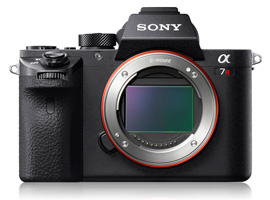
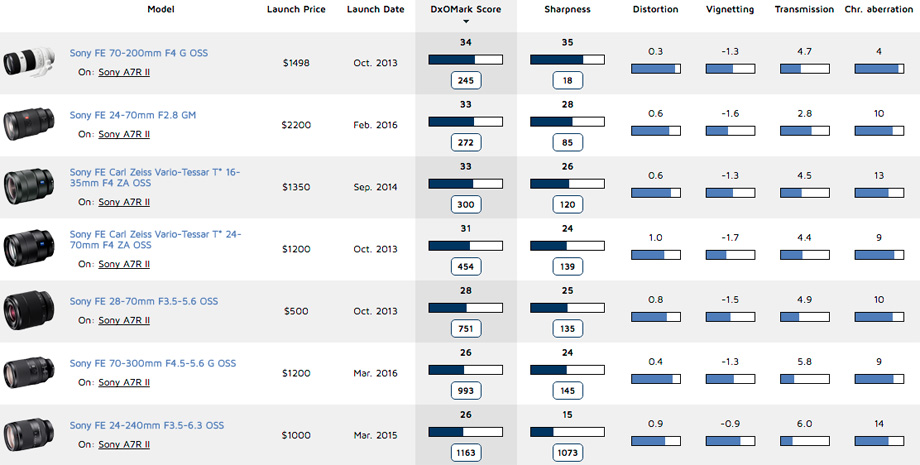
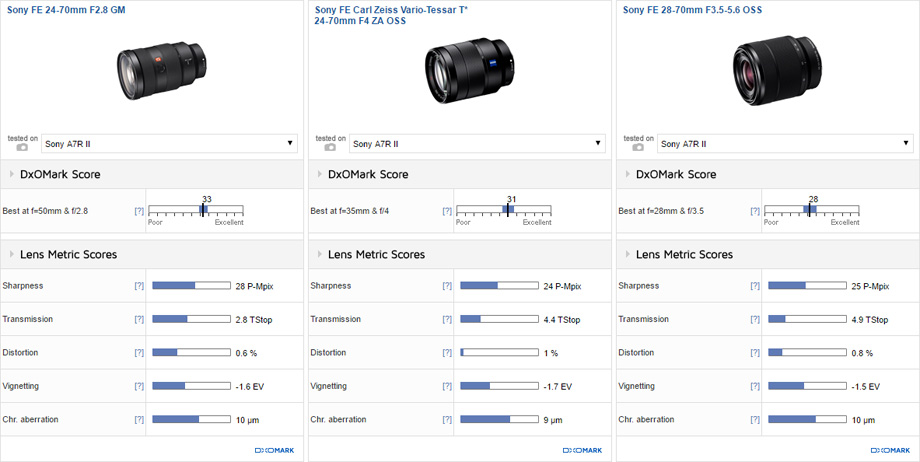
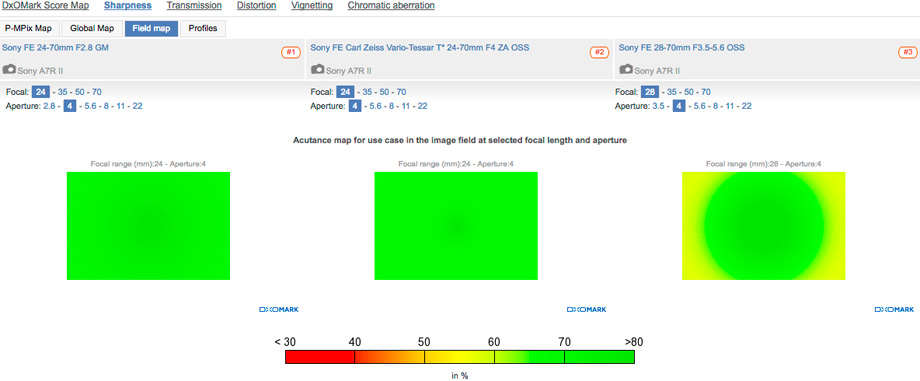
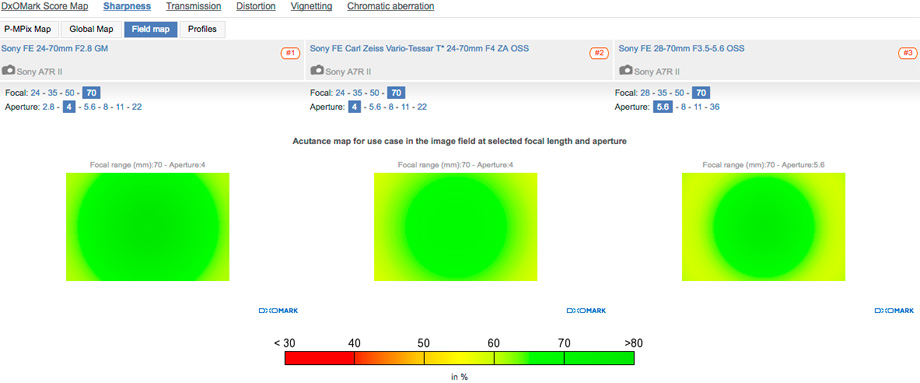
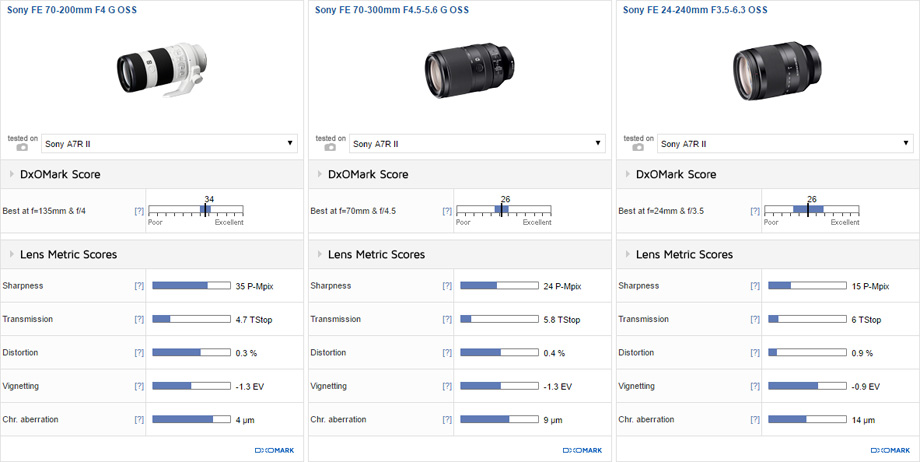
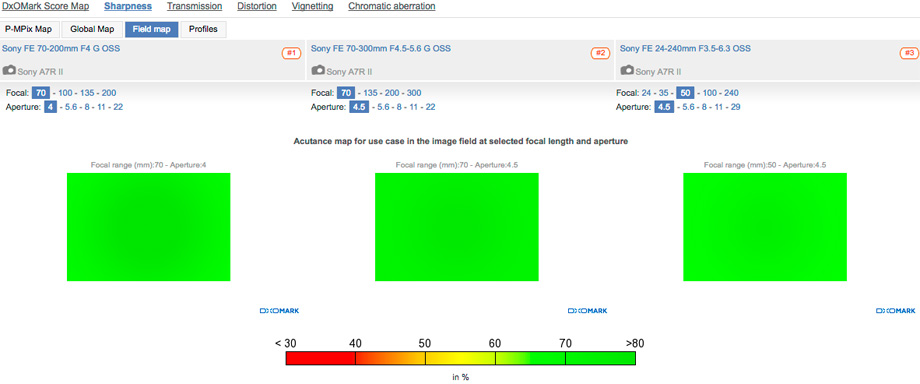
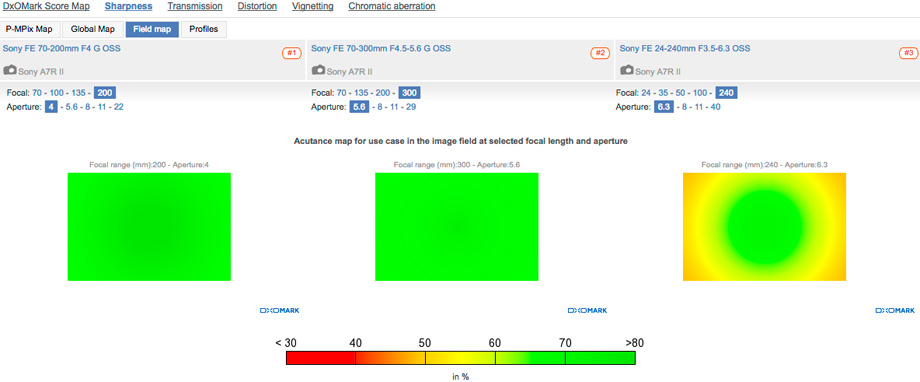
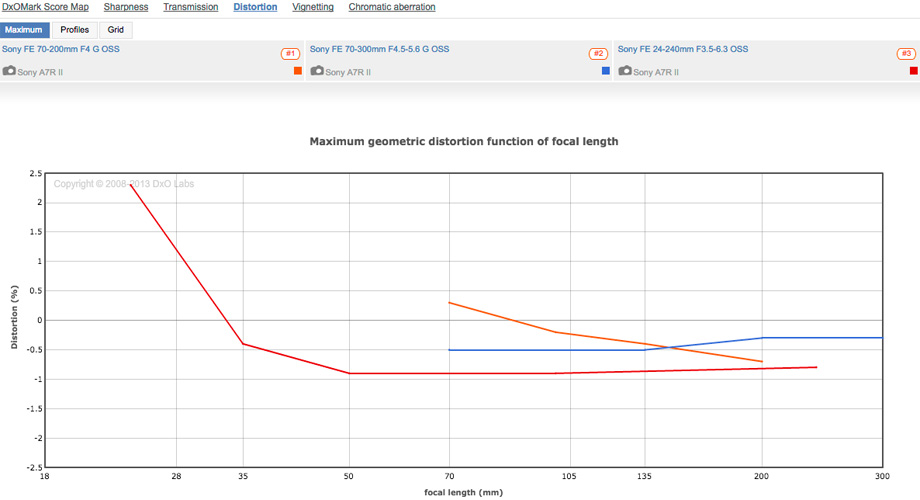
DXOMARK encourages its readers to share comments on the articles. To read or post comments, Disqus cookies are required. Change your Cookies Preferences and read more about our Comment Policy.